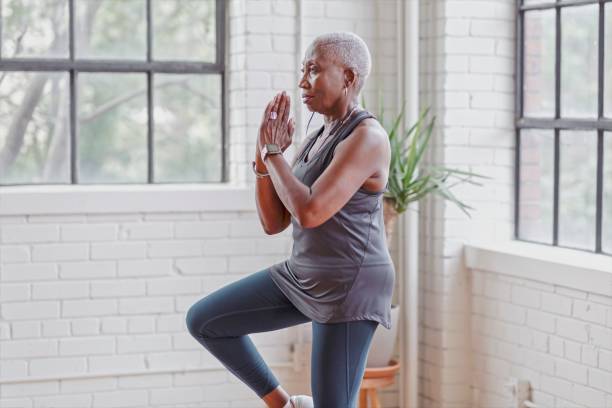18 Exercises For Rebuilding Strength After A Stroke

Rebuilding strength after a stroke requires patience, dedication, and a well-rounded exercise plan. Physical therapy can enhance recovery, but incorporating daily exercises at home can help accelerate progress. These exercises target mobility, strength, and coordination, providing a comprehensive approach to regain functionality.
Morning Mobility
Morning mobility exercises are a gentle way to start the day and prepare the body for movement. Begin with simple:
- Head rolls
- Neck rolls
- Shoulder rolls
gradually progressing to arm and leg movements. This routine can help reduce stiffness that accumulates overnight, enhancing overall flexibility.
Gentle Stretches
Stretching daily helps maintain muscle length and joint flexibility. Gentle stretches like:
- Calf stretches
- Hamstring stretches
- Arm reaches
can prevent muscles from tightening up. Hold each stretch for 10-15 seconds, focusing on relaxed breathing.
Range of Motion
Range of motion exercises help maintain joint flexibility and prevent contractures. Try exercises such as:
- Shoulder circles
- Wrist rotations
- Gentle ankle pumps
Work within a comfortable range, gradually increasing movement as strength and flexibility improve.
Balance Exercises
Balance training is essential for regaining stability after a stroke. Simple exercises include:
- Standing with feet together and holding onto a stable surface
- Or practicing shifting weight from one leg to another
Balance improves over time, helping prevent falls and enhance mobility.
RELATED: Always on my Mind: Remedies to Restore Your Memory After a Stroke
Upper Body Strength
Building upper body strength can assist with daily activities such as dressing and eating. Begin with resistance exercises like:
- Shoulder presses
- Seated rows
- Bicep curls
using light weights or resistance bands. Start with minimal resistance and increase as strength improves.
Arm Exercises
Arm exercises improve mobility and strength in the affected arm. Try gently:
- Shoulder raises
- Arm circles
- Side raises
These exercises can increase circulation, improve muscle tone, and support better functionality for arm tasks.
Hand Coordination
Hand coordination exercises are vital for improving dexterity and performing fine motor tasks. Practice:
- Finger taps
- Tracing shapes on a table with fingers
- Placing small objects in a container
These activities help improve hand movement and coordination.
Grip Strengthening
Grip exercises can restore hand functionality. Use a soft stress ball or putty, practice squeezing it for a few seconds, then release it. Start with gentle resistance and gradually increase as your grip strengthens. This can support daily activities, like holding utensils or brushing teeth.
Lower Body Focus
Improving lower body strength is essential for walking and balance. Begin with gentle:
- Seated marches
- Heel raises
- Leg extensions
These exercises help strengthen the hips, knees, and ankles, which are vital for stable and confident mobility.
Leg Exercises
Leg exercises, such as:
- Seated leg raises
- Mini squats
- Toe taps
Target the muscles required for walking and standing. Begin with seated movements, progressing to standing exercises as stability improves. These movements help build endurance and leg strength.
Walking Practice
Walking practice is a key component of stroke recovery, with assistance if needed. Start by walking short distances, focusing on maintaining an even gait. Use a walker or cane if necessary and aim for gradual progress. Regular walking practice enhances coordination and strength.
RELATED: Walking After a Stroke Can Boost Survival
Balance Training
Specific balance exercises, like:
- Side steps
- Standing on one leg
Improve stability. Start with a chair or wall for support, gradually removing assistance as balance improves. Practicing these exercises can make standing and walking more secure over time.
Core Stability
Core exercises strengthen abdominal and lower back muscles, which help stabilize the entire body. Try seated or lying-down exercises like:
- Pelvic tilts
- Seated torso twists
- Gentle abdominal crunches
These exercises enhance posture and support better balance.
Seated Exercises
Seated exercises are an effective way to build strength without bearing weight. Try:
- Seated marches
- Heel raises
- Arm lifts
These accessible exercises reduce the risk of falls, making them safe for those with limited mobility or balance issues.
Standing Activities
Once mobility improves, incorporate standing exercises like:
- Mini squats
- Toe raises
Hold onto a stable surface for support if needed. These exercises strengthen the legs and help the body get accustomed to standing for longer periods, which is essential for walking and balance.
Coordination Drills
Coordination exercises improve hand-eye coordination and body awareness. Practice reaching for objects or tapping your foot to a beat. These activities can help rebuild the neural pathways affected by the stroke, enhancing coordination for daily tasks.
Daily Activities Integration
Incorporate exercise into daily activities, like:
- Reaching for items in the kitchen
- Practicing standing up from a seated position
- Climbing stairs, if possible
These activities keep muscles active and reinforce functional movements used in everyday life.
Functional Movements
Focus on exercises that mimic daily movements, such as reaching, bending, and lifting. Functional exercises prepare your body for real-world tasks, like lifting groceries or getting out of bed. Using resistance bands can add a gentle challenge to these movements.
Task Modification
As you regain strength, modify tasks to practice independence. Start by performing activities, such as washing dishes or folding laundry, with adaptive tools if needed. This can help you regain confidence in daily tasks and improve fine motor skills and strength.
Progress Tracking
Tracking progress helps you stay motivated and measure improvements over time. Keep a journal of exercises, noting how you feel, any challenges, and improvements in strength and mobility. Progress tracking also enables better communication with your healthcare team.
Safety Considerations
Safety is paramount during stroke recovery. Move slowly, listen to your body, and avoid exercises that cause pain or discomfort. If needed, always have someone nearby for support, and consult a physical therapist for personalized guidance.
Fall Prevention
Reduce fall risk by strengthening balance, removing tripping hazards at home, and using support devices as needed. Regular balance and strength exercises reduce the likelihood of falls and help build stability.
Energy Management
Exercise can be tiring after a stroke, so practicing energy management is essential. Start with short sessions, gradually increasing the duration as your endurance improves. Take breaks when needed to avoid overexertion.
Recovery Periods
Allow adequate time for rest and recovery between exercises. Recovery periods help muscles repair and strengthen, which is vital in stroke recovery. Set aside specific times for exercise, but allow yourself time to rest to prevent fatigue and optimize progress.
These exercises provide a comprehensive approach to rebuilding strength after a stroke, focusing on mobility, coordination, and balance. Always consult with your healthcare team before starting a new exercise routine to ensure it’s tailored to your recovery stage. With consistency and patience, these exercises can help you regain strength, confidence, and independence.


